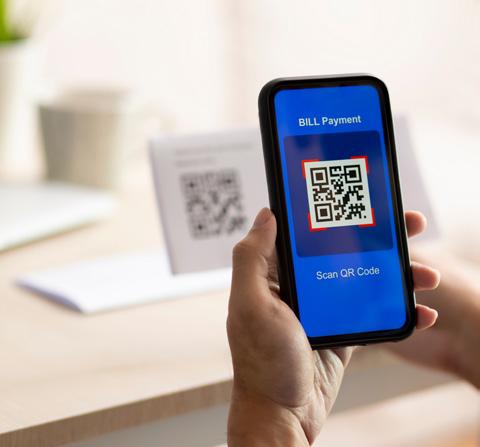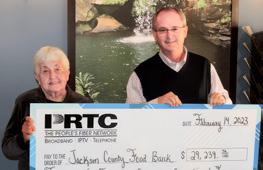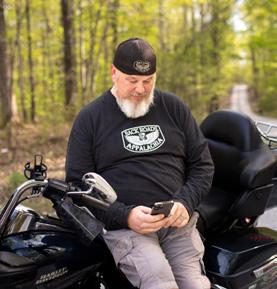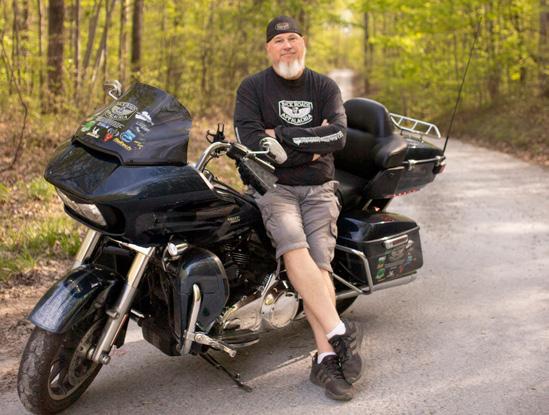CONNECTION
Economic booster

Backroads of Appalachia

AUTHOR FINDS HER VOICE
SWASHBUCKLING
ADVENTURES


Backroads of Appalachia

AUTHOR FINDS HER VOICE
ADVENTURES

Summer is finally here! That means barbecues, days at the pool and, if you have kids, reminding them to tackle their dreaded summer reading list before it is too late.
As they are doing their homework, I have an assignment for you. But don’t worry, it’s only a dozen pages.
The past few years have shown the world that broadband access is a necessity, not a luxury. As the demand and investment in broadband increases across rural America, so does the need for a skilled workforce to build and maintain these broadband networks.
NTCA’s Smart Communities program recently teamed up with the National Rural Education Association to create the Broadband Opportunities and Leadership Development (BOLD) K-12 Career Awareness Toolkit, which is chock-full of new and creative ways to engage students and get them excited about careers in the broadband industry. Whether your student is interested in computer science, engineering and even accounting or marketing, there are opportunities for everyone in the broadband industry.
From guidance on organizing hands-on internships and site visits, to working with schools to develop curricula, or even ways to get involved with local esports and robotics teams, this toolkit is a wonderful resource for parents, educators and community-based broadband providers alike.
Summer may be in full swing, but backto-school season will be here before you know it. Make sure you add the Smart Rural Community K-12 Career Awareness Toolkit to your summer reading list today! Read it here: ntca.org/BOLDToolkit.
QR codes — it stands for Quick Response — pop up frequently. TV ads, restaurant menus and much more rely on these little squares of blocky lines to quickly link a smartphone user to handy information, a download or as a way to digitally send money to someone.

The FBI, however, has warned that cybercriminals may tamper with the codes. The FBI offers a few tips so you can take advantage of QR codes while staying safe and secure:
• After scanning a QR code, check the URL to make sure it is the site you want. A malicious domain name may be similar to the intended URL but with typos or a misplaced letter.
• Be cautious when entering login, personal or financial information.
• If scanning a physical QR code, ensure the code shows no signs of tampering, such as a sticker placed over the original.
• Do not download an app from a QR code.
• If you receive an email asking you to complete a payment through a QR code, call the requesting company to verify. Look up the company’s number on a trusted site — don’t use a number from the email.
• Do not download a QR code scanner app — the built-in phone camera is a safer option.
• If you receive a QR code you believe to be from someone you know, contact them through a known number or address to verify.
• Avoid making payments through a site navigated to from a QR code. Instead, manually enter a known and trusted URL to complete the payment.
The arrival of fast, reliable internet service in rural areas sparked innovation across businesses, health care providers and government resources, leading to more options and richer services. When it comes to education, how students interact now with schools and each other has evolved at a similarly blistering pace.
First, there was the growth of cloudbased services — multiple remote networked computers that handle storage and processing of information. Then, since the cloud was doing the heavy computing work, an entire class of lowpower, lower-cost devices sprang up.
Together, this combo — low-cost Chromebooks, as well as similar devices, and cloud-based tools — have changed how many students learn.
Collaboration: The cloud allows students to work together on group projects after school or other times they’re not physically in the same room. Cloud-based storage systems, such as Google Drive, Microsoft’s OneDrive and others, allow the creation and sharing of documents, spreadsheets and presentations in real time — you can see the work of other members of your team as they’re making changes.
Collaboration and brainstorming are easier than ever.
Accessibility: With their Chromebooks or similar devices students can access their work from any location, at any time. All their work is saved on the cloud, making it easily accessible and organized.
Efficiency: In many school systems, teachers use the cloud to grade assignments more efficiently and even easily share the results with parents. Students might receive immediate feedback, allowing them to improve their work and better understand the material.
Personalization: These cloud-based systems create the option for personalized learning experiences. Students can access online resources and tools that cater to their specific needs and learning styles. For families that home-school, online communities with similar educational interests and other resources also become more accessible.
Productivity: Thanks to the cloud and low-cost computing devices, students can be more productive, organized and collaborative. And because the tools are far less expensive than traditional computers, more people can affordably access them.
Make sure you’re prepared.
• The essential computer: If your student needs a basic laptop to do homework and access online learning platforms, try the Lenovo Flex 5i Chromebook. “It’s comparatively inexpensive, and it offers fast performance plus an excellent keyboard and trackpad. The Flex 5i is also compact and light, and its 1080p touchscreen is vivid and bright,” according to a review by Wirecutter, a website operated by The New York Times offering reviews of a range of devices. Prices vary, but expect to pay about $350.
• Quality web cam: From education to work, video calls are common. If your computer isn’t already equipped, consider adding a camera. The Logitech C270 HD, often available for less than $30, is a good choice for students required to attend lessons online. It delivers quality and clarity.
Consider starting in the room where you watch television. Do you have a smart TV or a device like a Roku that lets you stream services such as Netflix? If you’re streaming music or podcasts, do you have a smart speaker like the ones from Google, Amazon or Apple? If you enjoy online gaming, please count those devices, too.
KEITH GABBARD Chief Executive Officer
Next, let’s move to the kitchen. Many appliances — everything from refrigerators to pressure cookers — have the option of using your Wi-Fi to connect to an app. Even some outdoor grills let you check in wirelessly. While you’re thinking about the outside, do you have a security system, smart locks or smart devices? They use Wi-Fi, too.
Also, don’t forget about the major systems of your home, such as heating and cooling. Smart thermostats can help you customize settings to your needs and schedules while helping you save money. Even some water heaters have smart options so you can monitor and manage usage.
Finally, count the big ones. How many computers connect to your Wi-Fi? What about tablets like iPads? Does your phone use Wi-Fi for calling or as a speed boost over the cellular connection?
The numbers add up, don’t they? In fact, there are studies that indicate the typical U.S. household has more than 20 Wi-Fi-connected devices.
Just a few years ago, many of the now-common devices simply didn’t exist. I suspect if you do this same exercise a few years from now you’ll find more devices, and likely even entirely new classes of technology, using your home network.
This connected world is the reason we’ve committed to bringing you a fast, reliable internet connection, one not only capable of managing your needs today but also powerful enough to accommodate the demands of tomorrow. It’s the type of forward-thinking innovation and investment at the heart of how PRTC has always operated.

You see, the more connected devices added to your network, the more robust it needs to be. Imagine that instead of cables moving bits, your internet is a large water pipe. Then, each device on your network is a faucet. Every faucet you turn on reduces available volume and water pressure. Also, the bigger the faucet, the more resources that specific pipe uses.
That last point becomes critical when considering your internet service — not all devices are equal. An intense gaming session or uploading large work files requires more speed and bandwidth than someone streaming music on a smartphone or checking in on social media. So, it’s important to match your internet service not only to the number of devices connected to your network, but also to how they’re used.
Did you count more connections than you anticipated? Well, if this exercise left you with questions about your service or what you need to do to get the most out of your internet connection, our team at PRTC is always available to help.
Thank you for letting us serve you.
is your member-owned cooperative serving Jackson and Owsley counties in East Kentucky. The cooperative is dedicated to using technology to keep its members connected through high-speed broadband internet, digital and HD television, wireless 4G phone service, local and long-distance calling and beyond.
Kendall Norris
President
Wendell Gabbard
Vice President
James Gary Cornett
Secretary
Nelson Bobrowski
Treasurer
Donald Barrett
Armel Davidson
Pat Henderson

many devices connect to your Wi-Fi? It may be more than you realize.
PRTC collected and matched donations from the 2022 holiday season to benefit local food banks. Your generosity, and PRTC’s matching effort, raised more than $59,000.



The breakdown of total donations for each Food Bank:

• Jackson County Food Bank, $29,239.76
• Sand Gap Food Pantry, $25,075.72




• Owsley County Food Place, $4,745.64
PRTC thanks all who donated and who continue to make a difference.




For generations, kids and adults alike have been captivated by legendary tales of pirates’ treasure-hunting and swashbuckling adventures. If your family loves the story of Peter Pan and the misadventures of Captain Kidd, you’re in luck! There’s a bounty of places around the South where your crew can get its pirate on.

Lexington, Kentucky
Woodland Aquatic Center’s brand-new Paradise Lagoon, which opened in May,
is a pirate ship and water attraction that brings high seas adventures to Kentucky. While the Paradise Lagoon pirate ship is new, it replaces the USS Woodland that generations of people grew up with. That ship sailed the waters of Woodland’s pool for decades before being decommissioned when it was no longer seaworthy. The folks from Lexington’s Parks and Recreation Department let the public vote on what they wanted to see replace the old vessel.
“Those results clearly indicated that the public wanted to keep the theme of

a pirate ship,” says Michelle Kosieniak, parks and recreation superintendent of planning and design.
The new USS Woodland reimagines pirate life by letting kids and adults climb aboard — they can try to find a hidden periscope. They can also use a waterslide to make a quick getaway into the pool while sea creatures look on. The design offers fun sprayers and water cannons, too. But, Michelle says, “It has more gentle play features than the old USS Woodland, so that our youngest visitors can also interact without being overwhelmed.”
 The American Star pirate ship sets sail from Orange Beach, Alabama.
The American Star pirate ship sets sail from Orange Beach, Alabama.
g Admission: $6 for adults, $4 for kids 15 and under
g Information: lexingtonky.gov/ neighborhood-pools
Hilton Head, South Carolina
Board the Black Dagger and set sail for a memorable day of adventure. Get your own pirate name, learn some pirate lingo, find sunken treasures, get a temporary tattoo and defeat Stinky Pete in a water cannon battle. It’s an action-packed experience that lets kids live their pirate fantasies on the water while using their imaginations.
The pirate ship cruises the calm waters of Calibogue Sound, so seasickness is rare. Wear comfortable clothes — bathing suits are not needed, but sunblock is wise. Reservations are strongly recommended.
g Admission: $39 for adults and children, infants 11 months and younger are free
g Information: piratesofhiltonhead.com
Silver Point, Tennessee
It’s said treasure abounds on the banks of the Caney, a river that flows deep in the mountains of East Tennessee. There’s a legend about a crew of pirates who stole a cursed treasure belonging to dastardly Captain JaBez and fled, spreading his ill-gotten gains across the water as they went.

Now, boaters — wearing pirate hats and carrying swords — can travel the river in canoes, searching for JaBez’s gold coins and sparkling jewels, while keeping their eyes peeled for the captain and his crew who may be disguised as local fishermen.


The Pirate Adventure is one of two pirate-themed trips offered by Canoe the Caney. The Pirate’s Dinner and Sunset River Cruise is new this season. The youngest allowed in a canoe or kayak solo is 8 years old, depending on experience. The youngest age for a child with a parent on board is 3 years old.
g Admission: Starts at $29
g Information: canoethecaney.com


Pigeon Forge, Tennessee
You’ll have a four-course feast that even the pickiest of pirates will enjoy. The menu includes Cracklin’ Pan-Fried Chicken, Swashbucklin’ Sugar-Cured Ham, Cob-O’ Butter Corn, Pirate HerbBasted Potato, Walk the Plank dessert and unlimited Coca-Cola, tea or coffee. And just to make sure all pirates are satisfied, gluten-free, vegan and vegetarian meals are available.
While you dine, Blackbeard and his quartermaster, Calico Jack, will lead the Crimson and Sapphire crews in a battle on land and sea in full-size pirate ships.

g Admission: $29.99 for kids, $49.99 for adults and free for children under 3 g Information: piratesvoyage.com
Orange Beach, Alabama
Bring your buccaneers aboard the American Star for a Pirate Adventure on Terry Cove, where they can get their faces painted, learn a little pirate lingo and even sing a sea shanty or two. Visitors get to help defend the ship in a “gun” battle, hear true stories of pirate and privateer attacks in the legendary Pirate’s Cove and hunt for the captain’s lost gold and treasure chest while keeping their eyes out for any surprise attacks! As an added bonus, you may see some dolphins, too.

g Admission: Starts at $29, free for children 1 and under
g Information: hudsonmarina.net/ Pirate-Adventure.htm

Glenna Combs knew exactly what retirement from her 37-year nursing career would look like. It was 2017, and she’d already started a successful hat-making business. Within three years, she’d sold plenty of hats and even hosted millinery classes for people from all over the country in her Manchester workshop.
When the COVID-19 pandemic hit, the sales slowed and the workshops stopped. “I even had 25 hats already made and ready to take to a show up in Cincinnati,” says Glenna, who was 70 at the time. “Everything got canceled. What made it worse was that I was stuck in my house with nothing to do.”
The slowdown hit her hard, because she’d never gotten used to free time. Part of that came from growing up in a log cabin in Leslie County as the youngest of 10 children. All her life, there was almost always something that needed to be done. When there wasn’t, she and her family would sit on the porch and play music and sing.
But when the world stopped in March 2020, her normal life ended with it. “My children at that point were bringing groceries to me, and they didn’t want me to go out,” she says. “That lasted for about two months, and I about went crazy. I’m a busy person, and I never liked being idle.”
Glenna had never given writing much of a thought. Her friends always liked the funny stories she told, and some even encouraged her to write a book. Still, writing seemed like it was for other people — not for a busy, working mother of three boys.

Once again, COVID changed everything. “When the pandemic came, I decided to sit down and write everything I could remember about my life,” she says. “I started with the first thing I could remember until the day COVID hit. I got to where I liked it, and it turned into my memoirs, ‘Down a Crooked Road: Memoirs of My Journey.’ That was the first book I wrote.”
Glenna liked the process of writing so much that, when she ran out of things to write about her own life, she decided to make things up. “I thought, ‘Hmm, reckon I could write fiction?’”
She kept writing, branching out into historical fiction, mysteries and children’s books. Some of the books borrow from her own life and the oral histories passed down by her father and other family members. All are set in Clay, Leslie and Perry counties, and several of her books mention Dumplin’ Gap, which is a fictional stand-in for the town of Hyden, Kentucky.
“With my books, I just get an idea and develop it in my mind. I don’t know how they come to me,” Glenna says. “The great thing about writing fiction is you can have your character do what you want them to do.”

In three years, Glenna has written and published eight books through an Amazon self-publishing press. A few others are yet to be published. “You can publish for free,” she says. “You just have to pay for
the actual book. The price depends on various things, like the type of printing and pictures. One of my children’s books I wrote and published in one day.”
She sells her books on Amazon and at the Clay County Historical Society office in Manchester, but most of her books are sold from her home, where she built a guesthouse a few years ago for attendees of her millinery workshops.

The guesthouse is another success story for Glenna. She only ever planned for it to house her own guests. But a friend urged her to attend an Airbnb workshop offered by Stay in Clay, a local group founded to increase tourism and improve the lives of residents.
Glenna was skeptical at first, because she didn’t know how many people would actually come to the county. She was soon surprised by the response. “Since I opened it about five years ago, I bet there’s not been six weekends I haven’t had somebody staying there,” she says. “I was the first one in the county, and now there are about 15.”
She no longer underestimates the draw of her county or the strength of online marketing. “They come from all over the U.S., and even Germany and Morocco,” she says. “Some come because they’re driving to Florida, and others want to visit the Red River Gorge or go dirt biking or four-wheeling.”

When visitors arrive, Glenna believes they’re pleasantly surprised at what they find, including beautiful and peaceful scenery and interesting people. “The people in these mountains were always kind of independent and self-sufficient,” she says. “We had to be, because we didn’t have the resources they had in big cities. This is just kind of the way we are.”
Glenna Combs has written and published at least eight books spanning several genres. She’s penned children’s books, historical fiction novels, mysteries and a memoir. They are available for purchase on Amazon, as well as inside Clay County Historical Society at 202 Main St. in Manchester.

 Story by DREW WOOLLEY
Story by DREW WOOLLEY
The internet was a much different place when Peter Daams started Travellerspoint.com with his brother, Samuel, in 2002. Back then, they were looking at sites like FriendsReunited and classmates.com for inspiration — places for people who had lost touch to reconnect.
“We wanted to make something similar for travelers who had lost track of people they met on trips,” Peter says. “Our tagline was ‘Travel Friends Reunited.’ Our initial launch included a service to help with that, as well as a very basic trip log and a basic travel diary feature.”
The site attracted some attention, but it soon became apparent that Travellerspoint wasn’t giving visitors many reasons to hang around after they had searched for or found their missing travel buddies. The next year, the brothers added travel forums to the site, with a little extra help from a Geocities project that was about to be shuttered.
“That really kick-started the community side of the site and has set the tone for how it’s grown since then,” Peter says. “The owner of that project agreed to let us take it over, so we instantly were able to kick-start our forums with a great group of users who were experts on many travel destinations.”
Today, the site has grown into one of the largest and most active travel communities on the internet with more than 1 million users sharing photos, blog posts and mapping trips. Travellerspoint and other online travel communities like it are also the perfect hubs for the growing number of travelers looking to share their adventures with other enthusiasts.
Digital communities keep travelers connected on the go
Since the end of travel restrictions around the COVID-19 pandemic, Americans have been eager to get out and see more than their backyards. Data from the U.S. Travel Association showed that travel spending in March 2023 was up nearly 10% over the previous year and 5% over spending in 2019.
That enthusiasm shows no sign of slowing down as more than half of Americans say they plan to make travel a priority this year. But how they travel is starting to change. More travelers are putting an emphasis on finding destinations that are off the beaten path, family-friendly and environmentally responsible.
Online communities provide the perfect place for travelers to research these new adventures and get recommendations from others who have tried them. Many of these communities have migrated to social media platforms like Facebook, where they can cater to the specific needs of different groups.
Communities like Wanderful and Girls Love Travel, for example, provide a network of women who can support and even join other women in their travels. The TravelAwaits community offers stories, deals and advice geared toward travelers ages 50 and up. Digital Nomads Around the World, on the other hand, offers inspiration and advice for younger travelers living and working on the go.
While many of these groups rely on social media to maintain their communities, Peter still sees sites like his playing an important role for dedicated travelers. The rise of Facebook initially saw some of the more off-topic banter on Travellerspoint forums shift to the social media channel. But as other communities have shut down, Travellerspoint has become a haven for hardcore travelers looking for a place to discuss their passion.
“Many of those members are now very active on Travellerspoint,” Peter says. “We became something of a refuge for the people who lost their previous online communities.”
travel freely while using the internet to work remotely. They tend to travel light and live out of temporary housing while they’re on the move. It isn’t a lifestyle for everyone, but if it piques your interest this group can answer your questions.

TravelAwaits — Traveling in your 50s and beyond often comes with the benefit of more time and resources to explore your interests. But it can also present unique challenges. TravelAwaits is a community by and for older travelers, so you can trust that every deal, recommendation and discussion keeps your needs in mind.
Wanderful — Whether you’re a woman eager to explore solo or looking for a supportive group of fellow travelers, Wanderful has everything you need. Learn about safe travel practices, pick up inspiration for your next excursion or connect with other adventurous women at online and offline events.
Food Travelist — Everyone loves a great meal on vacation. But for some travelers, the food is the point. If that’s you, Food Travelist has your back with tasty recommendations and mouth-watering photos. When your wanderlust kicks in back home, you can even find recipe ideas to take your taste buds on a trip instead.


Erik Hubbard shakes his head thinking about the changes he’s seen in Eastern Kentucky over the course of his 43 years. “I remember the glory days of coal when I was a kid,” says Erik, founder and executive director of Backroads of Appalachia, a nonprofit organization that promotes economic development through tourism. “There were things to do. Movie theaters were open, and kids were having fun.”
But things changed when he reached high school. “My teachers and everyone else started telling us to get out. They told us not to stay here, because there wouldn’t be anything left for us.”
Erik listened. At 19, he joined the U.S. Navy, saw the world and found a life that took him away from his home in Appalachia. At one point, he worked for a USO program that was affiliated with the Virginia Beach Convention & Visitors Bureau, a well-established and successful tourism authority. “I started off sweeping floors and gradually worked my way up,” Erik says. “I liked what they were doing, and I got interested. I asked questions. Why is tourism important, and how does this work?”
After about six years, he moved on to work as a heavy equipment mechanic for Norfolk Southern Railway to support his family. But he always remembered the tools that working in tourism taught him.
Erik Hubbard, founder and executive director of Backroads Appalachia, turned his motorcycling hobby into a nonprofit that brings tourists to small towns hit hard by the loss of the coal industry. Story by JEN CALHOUNThroughout his life, Erik loved riding motorcycles. He traveled across the country with his father, riding the backroads all the way to historic Highway 101 that runs along the West Coast of the U.S. through California, Oregon and Washington.
“Through our travels on the two-lane roads away from the interstate, we could see the rural towns dying everywhere — just like the ones in Appalachia,” Erik says. “But we also saw some of these towns thriving. The difference was these places had a niche — a way to attract people and get them to spend money. The idea of ‘revitalize or die’ became very important to me.”
While living in Tennessee, he started organizing weekend events for other motorcyclists. He’d announce them on Facebook groups for bikers and round up people interested in riding through Kentucky. He knew it was a good way to bring money to his home state while also giving other bikers a chance to see some gorgeous sights along the way. In addition, he raised nearly $300,000 for Ride for Hope by organizing events after his adult daughter was diagnosed with NonHodgkin lymphoma.


Those experiences got Erik interested in finding other ways to help. Could he do something similar to help bring in money to the parts of Appalachia that
were struggling? With that idea in mind, he founded Backroads of Appalachia in Lynch, Kentucky, in 2018.
The 501(c)3 holds events and identifies safe, exciting routes in a 4,000-mile area of Eastern Kentucky, Tennessee, Virginia, West Virginia and Ohio for motorcyclists and car enthusiasts to meet up and ride. During their trips, the groups spend money along the way, while often helping various local organizations.
Since it started, Backroads has identified several safe, exciting trails with names like Dragon Slayer and TwoHeaded Dragon. The organization’s app offers directions for each route, while steering riders and drivers to businesses, restaurants and lodgings along the way.
In addition, Backroads has built a welcome center in Lynch, which offers information and sells local products and souvenirs. With the organization’s help, the town of Lynch and the surrounding area have recently opened 33 new
businesses due to the growth in tourism dollars.
Cumberland, Kentucky — another town on Dragon Slayer’s route — is also experiencing a rebirth, Erik says. “They have a theater being rebuilt, and they’re redoing buildings on Main Street because of the increased traffic.”
Erik hopes to bring business to Jackson County in a similar way. With help from the county and Judge-Executive Shane Gabbard, Backroads recently acquired a 99-year lease on the old Civil War hospital, now known as Big Hill Welcome Center. “I call that welcome center ‘The Gateway to Appalachia,’” Erik says. “We also have plans to open a general store in the building that will sell local products and Kentucky Proud products.”
Erik has a particular love for Jackson County because it’s where he and his wife decided to make their home. “We loved the people here, the location and the natural beauty of this place,” he says. “But what really sold us on investing here and building a home was the fast internet provided by PRTC. In order to do my job correctly, I need fast internet.”
Backroads of Appalachia is a nonprofit organization focused on bringing economic opportunities to the region by showing motorsports enthusiasts everything Appalachia has to offer — fun roads to drive, beautiful scenery and welcoming businesses. Backroads also offers jobs to local people in recovery, while continuing its mission to raise the quality of life for the entire region.
For more information on driving trails and upcoming events, visit the backroadsofappalachia.org website, find the organization on Facebook or download the Backroads of Appalachia app.
Photos by Tonya Oliver While traveling cross-country by motorcycle with his father, Erik saw how small rural towns that attract tourists can flourish.Instant pots became a “thing” in the 2010s, and people fell instantly in love with them. Combining an electric pressure cooker, slow cooker, rice cooker and yogurt maker in one, multicookers save space and cook meals quickly. What better time to hop on the bandwagon than now, when summer produce is at its height?

If you’re old enough to remember your grandmother's pressure cooker, you may know horror stories of it blowing up and causing injuries. But don’t worry! Today’s electric pressure cookers have a slew of safety features, including sensors to monitor temperature and pressure.
The price of multicookers has come
down from north of $500 to under $65, an excellent price for beginners. If you want more functions or higher wattage, expect to spend upward of $100. Here are some recipes to get you started.

1 tablespoon olive oil
1 medium onion, chopped
4 teaspoons minced garlic
3 medium ears fresh corn, kernels removed (or 2 1/4 cups frozen corn)
2 pounds tomatoes, peeled, seeded and chopped
1 sweet bell pepper, seeded and diced
2 medium zucchini, diced
1 cup fresh or frozen lima beans
8 ounces sliced mushrooms
1 small eggplant, peeled and diced
4 cups low-sodium vegetable broth
1 tablespoon vinegar (red wine, balsamic or white)
1 tablespoon sugar

1 tablespoon Italian seasoning
1 teaspoon salt, or to taste
Ground black pepper, to taste
Press the saute button. Add olive oil to the stainless steel insert. Wait 2 minutes for it to preheat.
Add onion and garlic. Saute, stirring frequently, just until onion is tender (about 5 minutes). Press off/stop button. Add remaining ingredients. Place lid on the cooker and make sure the valve is set to sealing. Press soup and set the timer for 12 minutes.
The cooker will beep and start cooking. It may take about 20 minutes for it to come to pressure before the timer starts. When the cooking is done, allow the pressure to naturally release for about 5 minutes, then quick release any remaining pressure by switching the valve to venting. Carefully remove the lid, away from your face, and set aside. Stir and season with salt and pepper. Let cool a bit before serving.
Using canned tomatoes rather than fresh in this recipe from Instant Pot makes this recipe a breeze.
4 tablespoons olive oil
1 medium onion, diced
2 small to medium carrots, diced
2 celery sticks, diced
3 teaspoons salt
1 teaspoon thyme leaves
2 bay leaves
2 small beets (canned or fresh), diced
1 cup diced red bell pepper
5 mushrooms, diced
1/2 of a medium zucchini, diced
2 cups fresh spinach leaves
5 garlic cloves, minced

1 jalapeno red chili (Use half or less if you don't like some heat.)
3 cans whole tomatoes in juice
1/2 cup water

This recipe from Instapot is a cooker full of comfort.
1 tablespoon canola oil
1 (4-4 1/2-pound) boneless chuck roast, excess fat trimmed and cut into 6 pieces
1 cup beef stock
6-8 jarred pepperoncini salad peppers, plus 1/4 cup liquid from jar
1 (1-ounce) package dry onion soup mix
2 tablespoons dried parsley flakes
1 tablespoon dried chives
2 teaspoons dried dill
1 1/2 teaspoons onion powder
1 teaspoon garlic powder
1 teaspoon freshly ground black pepper
3 tablespoons cornstarch
Set a 6-quart cooker to the high saute setting. Heat oil then add beef and cook until evenly browned, about 2-3 minutes per side. Set aside.
Turn the multicooker on and press the saute key. Once hot, add the olive oil, onions, carrots and celery and cook for 5 minutes, stirring a few times.
Add the rest of the ingredients. Press cancel to stop the saute process. Stir the contents and pop the lid on top.
Lock the lid, making sure the top valve points to sealing. Set to manual/pressure cook on high pressure for 10 minutes. The cooker will take 5-10 minutes to build up the pressure and the timer will begin.
Once finished, allow the pressure to release naturally for 10 minutes and then move the top valve to venting to quickly release of the remaining pressure.
Stir in beef stock, scraping any browned bits from the bottom. Stir in pepperoncini and liquid, onion soup mix, parsley flakes, chives, dill, onion powder, garlic powder and pepper. Return beef to the pot.
Select manual setting, adjust pressure to high, and set timer for 45 minutes. When finished cooking, naturally release pressure according to manufacturer’s directions, 20-30 minutes.
Remove beef from the pot, then shred, using two forks.
In a small bowl, whisk together cornstarch and 3 tablespoons cold water and set aside.
Select high saute setting. Bring to a boil, stir in cornstarch mixture and cook, stirring frequently until slightly thickened, about 3-5 minutes. If the mixture is too thick, add more beef stock as needed until desired consistency is reached. Serve immediately.
Open the lid and stir. Using an emersion blender, puree into a thick sauce. You can also do this in a blender or a food processor, but make sure to cool the sauce down slightly and do this in batches. Pour the sauce into containers or mason jars for storage or use right away as a sauce for pasta, pizza, enchiladas, meatballs and more.


